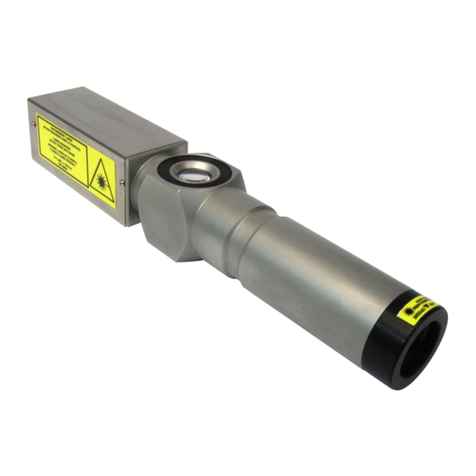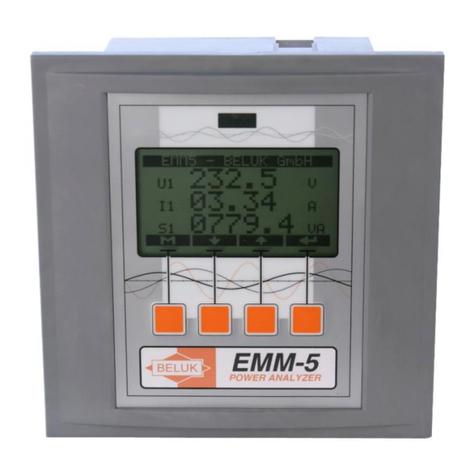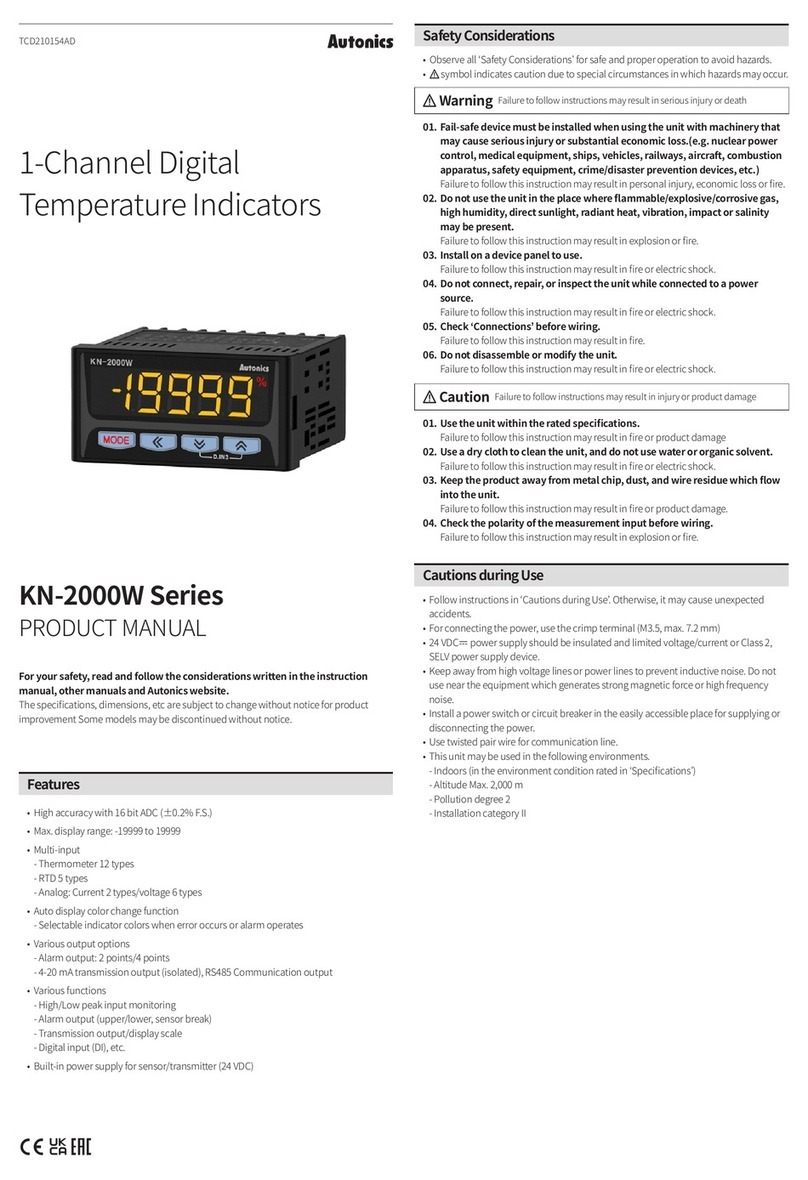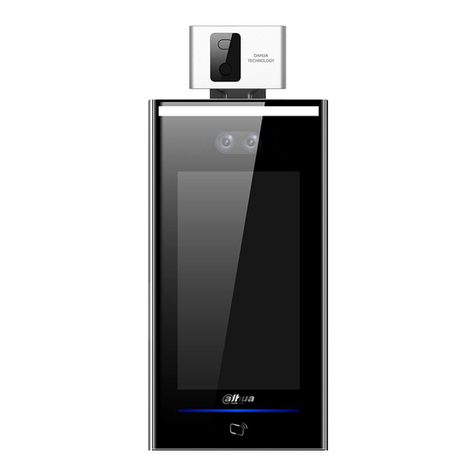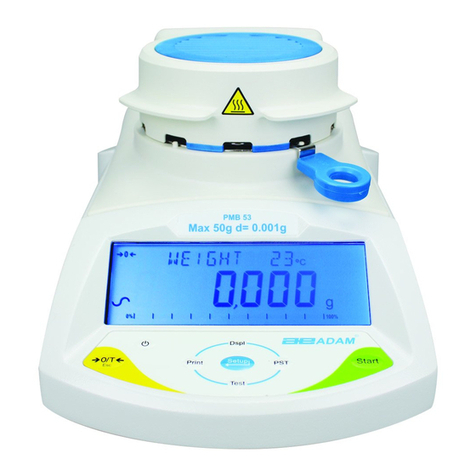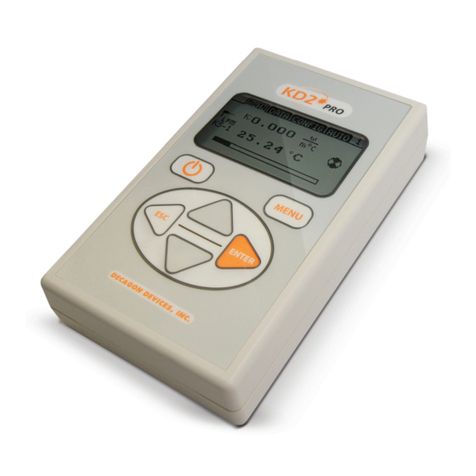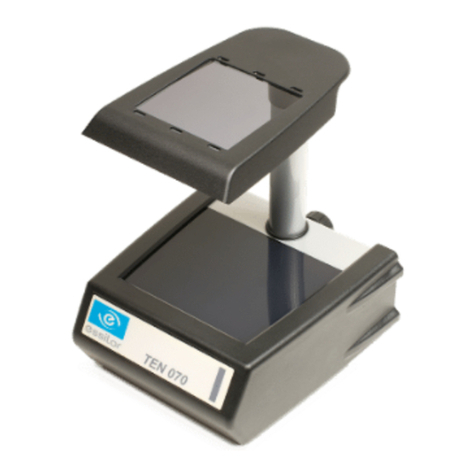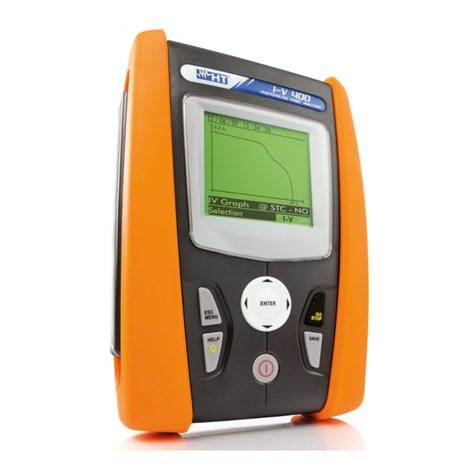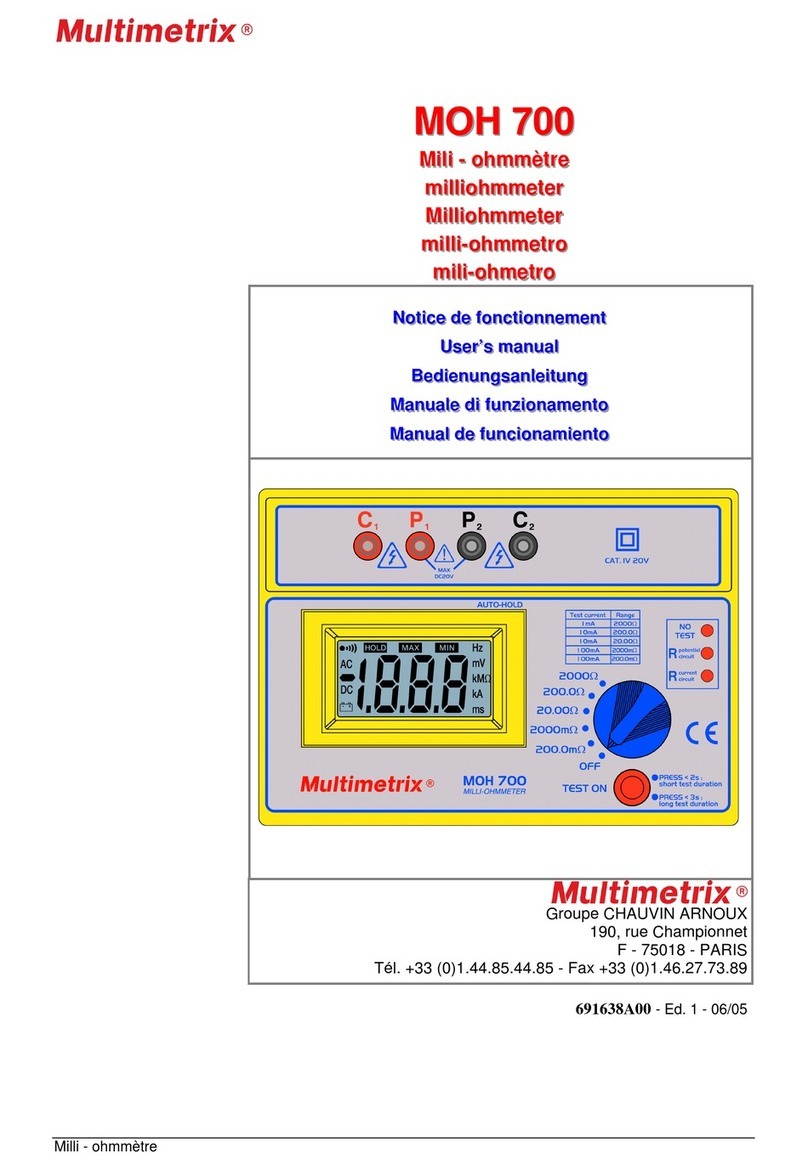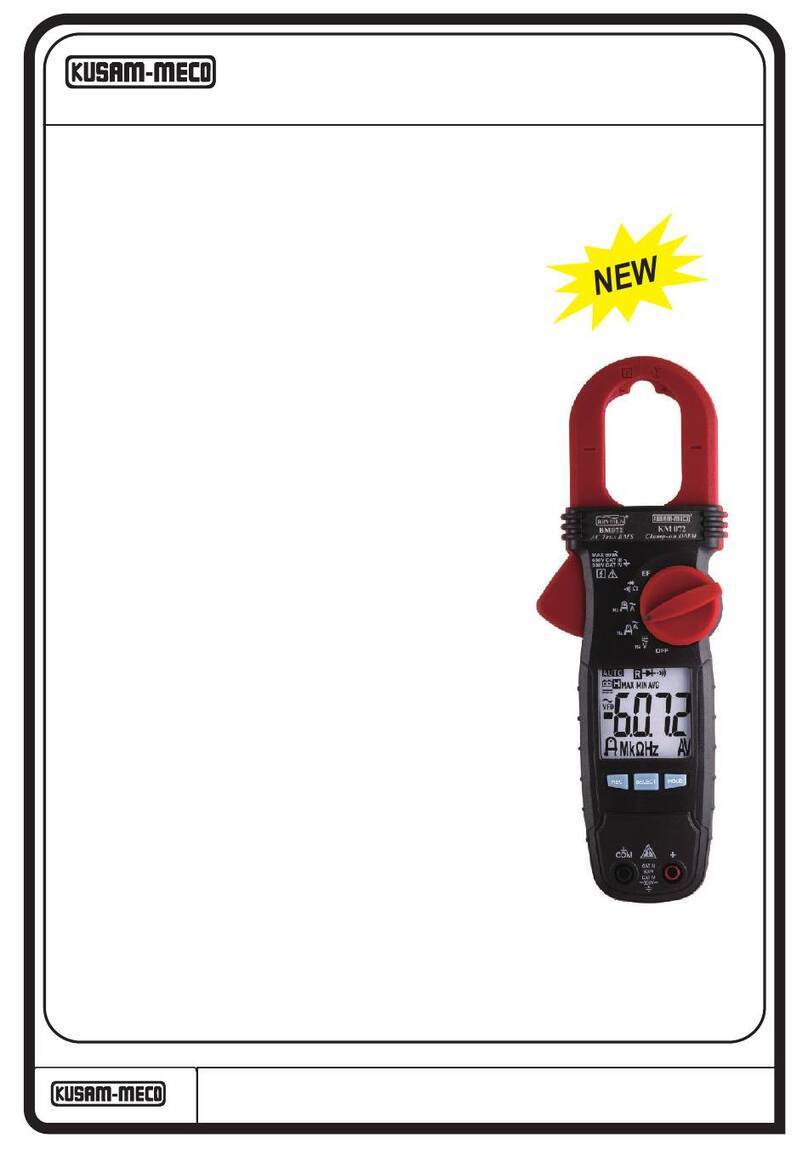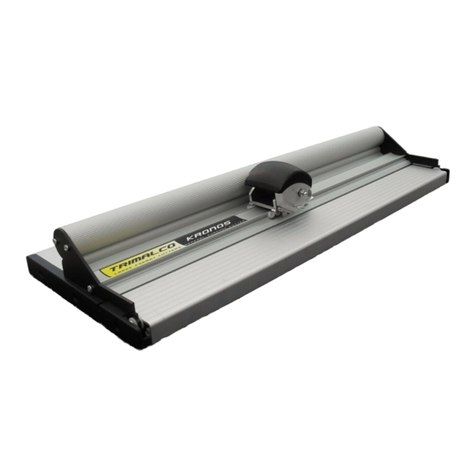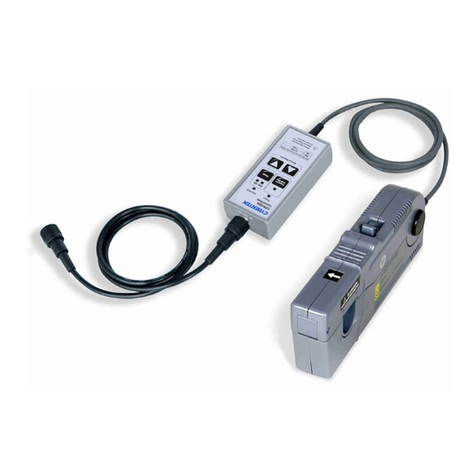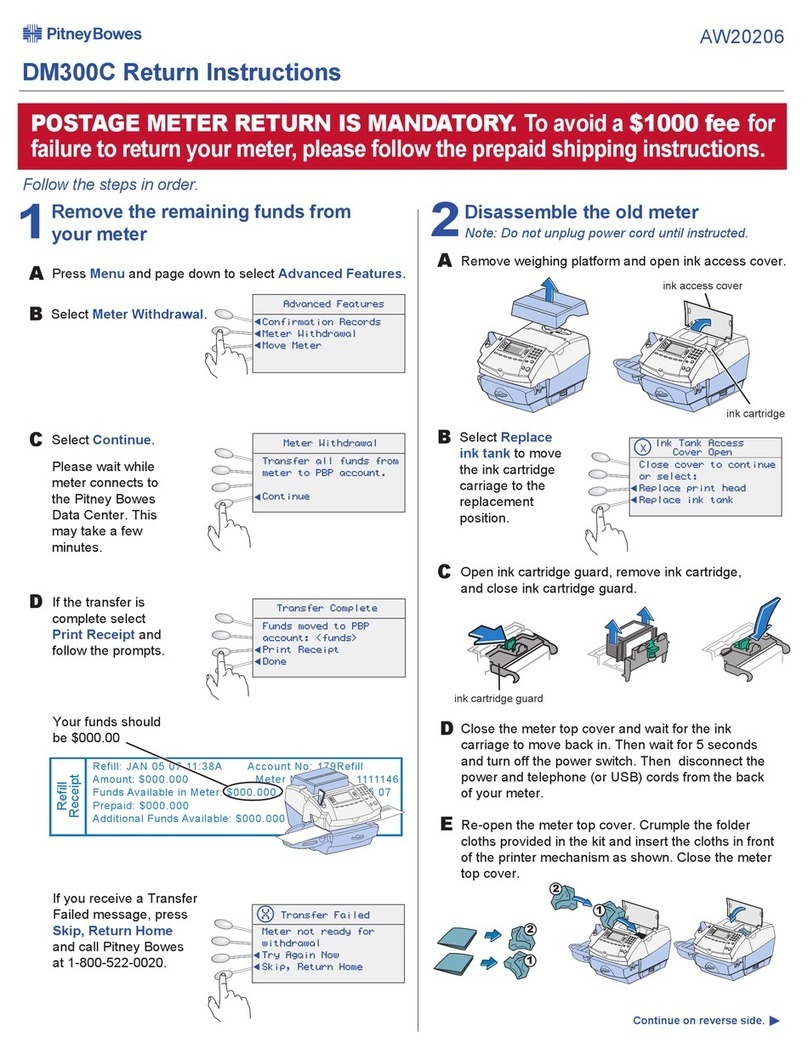SEO DST 30 Series User manual

Surface & Electro-Optics Corporation
Released 2014. 05
Version
6.0
DST 30 Series
Surface Tension Meter
Administrative
Guide

Surface & Electro-Optics Corporation
Administrative Guide
Copyright ã2000 All rights reserved by SEO
This is reprinted 2001.5
!"#$%&'()*&+,$-$./0&+$1234-$%4/+,,256&-$""75879-$%&:(;
$
<=>?$8@5975@!8$!A#7$BCD?$8@5975@!8$!A#A
$
000E'5(&E1&F$$ (F;2GH$'(&I'5(&E1&F
$
$
$
$
$
$
$
$ $ $ $ $
$

3
$
$
$
$
$
$
J&*(G$6.<$9K$.(:2('$
L+M/3$.(:2;G$N/FO(:$
6;3($&P$QRS$
J;+/P;13/:($
.E=ESE$T&E$>3*$
U;::;+34$7$4(;:$
$
$
$
$
$
J(;'/:(F(+3$J(3V&*$ $ $ 6/$N&W4$X2+,-$U2GV(GF4$QG;3($
J(;'/:2+,$X;+,($ $ $ $ K$3&$AKK$*4+('$R$1F$
Y;G;+1($T;M;1234$ $ $ $ @7K$,:;F'$
Y;G;+1($C11/:;14$ $ $ $ 7$F,$
.;FMG($.3;,($SM(:;32&+$ $ $ Q:(12'($F;+/;G$'3;,($
Q&0(:$./MMG4$$$$77K$3&$@@K$ZCT$
62F(+'2&+$ $ $ $ $ @KK$FF$[$@AK$FF$[$97K$FF$ $
$ $
X(,2'3:;32&+$&P$.=S$.(:2('$
X(,2'3:;32&+$&P$.&P30;:($

4
$
For safe and effective use
$
L3$2'$:(1&FF(+*(*$3V;3$4&/$:(;*$3V2'$F;+/;G$1;:(P/GG4$3&$,/;:;+3(($1&::(13$2+'3;GG;32&+$&P$3V($
'4'3(F$;+*$3&$'M((*$/M$2+3:&*/132&+$3&$3V($'4'3(FE$L3$;G'&$V(GM'$3&$;\&2*$F2'/'(-$0V21V$
1&/G*$G(;*$3&$*;F;,2+,$3V($'4'3(FE$
$
L+$3V2'$&M(:;32&+$F;+/;G-$0;:+2+,$M&2+3'$;:($2+*21;3(*$023V$3V($P&GG&02+,$'4FO&G'$3&$M:(\(+3$
&M(:;3&:'$P:&F$2+]/:2('$;+*$3V($2+'3:/F(+3$P:&F$*;F;,(E$
$
.=S$/'('$23'$;11/F/G;3(*$*('2,+$;+*$M:&*/132&+$([M(:2(+1($3&$*(G2\(:$;*\;+1(*$'/:P;1($
;+;G4'2'$M:&*/13'$3V;3$&PP(:$'/M(:2&:$M(:P&:F;+1($;+*$(+V;+1(*$*/:;O2G234E$T&FMG(3($
1/'3&F(:$';32'P;132&+$3V:&/,V$M:&*/13$^/;G234$2'$&/:$,&;GE$$
$
$
$
$
$
.4FO&G$
$
J(;+2+,$
$
$
$
$
$
$
$
$
L+*21;3('$;$'23/;32&+$&P$M&3(+32;G$2+]/:4$3&$V/F;+'$;+*$*;F;,($
3&$3V($2+'3:/F(+3$2P$&M(:;32&+'$;,;2+'3$3V($1&+3(+3'$;:($*&+(E$
$
L+*21;3('$;+$2FF2+(+3G4$V;_;:*&/'$'23/;32&+$0V21V-$2P$+&3$
;\&2*(*-$02GG$:('/G3$2+$*(;3V$&:$'(:2&/'$2+]/:4E$
$
$
$
$
L+*21;3('$M&3(+32;G$(G(13:21$'V&1)E$
$
MEMO$
$
L+*21;3('$ 3(1V+2^/('$ ;+*$)+&05V&0$3&$,(3$F&:($ ;11/:;3($
F(;'/:(F(+3'E$

5
$
Table&of&Contents&
Released 2014. 05 ................................................................................................................ 1
FOR SAFE AND EFFECTIVE USE ........................................................................................ 4
1. HARDWARE SET-UP (DST 30 MANUAL TYPE)
......................................................................... 7
1.1 BASIC ITEMS INCLUDED WITH THE DST 30 ................................................................................ 7
1.2 COMPONENTS AND CONTROL ELEMENTS .................................................................................. 8
1.3 CONDITIONS OF INSTALLATION ............................................................................................... 9
1.4 INITIAL DST 30 SET UP ..................................................................................................... 10
2
OPERATION
..................................................................................................................... 14
2.1 CLEANING THE DU NOÜY RING ........................................................................................... 14
2.2 LOADING THE SAMPLE ....................................................................................................... 15
2.3 MEASURING SURFACE TENSION BY THE DU NOÜY RING METHOD................................................ 16
2.3.1 Surface Tension Result by Ring Method ....................................................................... 19
2.4 MEASURING SURFACE TENSION BY THE WILHELMY PLATE METHOD ............................................. 20
2.4.1 Surface Tension Result by Plate Method ..................................................................... 23
2.5 MEASURING INTERFACIAL TENSION ...................................................................................... 24
2.5.1. Interfacial Tension Result .......................................................................................... 26
2.6 CMC (CRITICAL MICELLE CONCENTRATION) MEASUREMENT ..................................................... 27
3 CALIBRATION..................................................................................................................... 28
3.1 CALIBRATION PROCEDURE .................................................................................................. 28
4 THEORY OF SURFACE TENSION ............................................................................................ 30
4.1 DU NOÜY RING METHOD ................................................................................................... 30
5 CONDITIONS INFLUENCING SURFACE TENSION ................................................................ 31
5.1
T
EMPERATURE
................................................................................................................. 31
5.2
T
IME
............................................................................................................................. 31
5.3
D
ENSITY
......................................................................................................................... 31
5.4 SURFACE CLEANING .......................................................................................................... 31
5.5 PURITY OF LIQUID ............................................................................................................. 31
5.6 SURFACE ROUGHNESS AND PORE SIZE ..................................................................................... 31
5.7 INFLUENCE OF ADSORPTION ................................................................................................ 31
5.8
V
IBRATION
...................................................................................................................... 31
6
COMPANY INFORMATION
................................................................................................ 28
6.1 ADDRESS & PHONE NUMBERS ............................................................................................. 28
6.2 SERVICE INFORMATION ...................................................................................................... 28
Warranty ........................................................................................................................... 28

6

7
1. Hardware Set-up (DST 30 Manual Type)
Diagram & Installation
$
1.1 Basic items included with the DST 30
$
No. Description Quantity$
$
$
7$
J;2+$`+23$a@KK$FF$[$@AK$FF$[$97K$FFb$ 7$
@$ U(2,V3$T;::2(:$Y(;F$X&*$ 7$
9$ T;G2O:;32&+$U(2,V3$cAK$,?$ 7$
"$ d;+,(:$P&:$3V($:2+,$e$=[3(+*(:$ 7$
A$ 6/$N&W4$X2+,$ 7$
#$ fG;''$Y(;)(:$ 7$
g$ <0((_(:'$e$M&0(:$1;OG($ 7$
8$ L+'3:/132&+$F;+/;G$ 7$
$
$
Optional:
$
No. Description Quantity
$
7$ T2:1/G;3&:-$d(;3RT&&G$57K$hT$3&$7KK$hT$ 7$
@$ fG;''$1V;FO(:$P&:$3(FM(:;3/:($1&+3:&G$ 7$
$
$

8
$
1.2 Components and Control Elements
<V($6.<$9K$1&+'2'3'$&P$'(\(:;G$M;:3'E$<V2'$1V;M3(:$M:&\2*('$;+$&\(:\2(0$&\(:$3V($
2+'3:/F(+3$;+*$23'$1&FM&+(+3'E$
$
$

9
$
1.3 Conditions of Installation
A. Environmental conditions$
$
ü$L+*&&:$/'($
ü$<(FM(:;3/:($i$"K$hT$
ü$ J;[2F/F$ :(G;32\($ V/F2*234$8Kj$P&:$3(FM(:;3/:('$/M$3&$97$hT$ *(1:(;'2+,$
G2+(;:G4$3&$AKj$ :(G;32\($ V/F2*234$;3$"K$hT$
ü$J;2+$M&0(:$'/MMG4$\&G3;,($PG/13/;32&+'$+&3$3&$([1((*$k$Aj$&P$3V($+&F2+;G$\&G3;,($
$
$
B. Attention$
$
UV(+$'(332+,$/M$3V($2+'3:/F(+3-$1V&&'($;$G&1;32&+$3V;3$2'$+&3$2+$P:&+3$&P$;$
O:2,V3$G2,V3$'&/:1(E$ Z2O:;32&+$1;+$;PP(13$3V($:('/G3$&P$3V($F(;'/:(F(+3E$$
QG(;'($1V&&'($;$G&1;32&+$;'$\2O:;32&+$;'$P:(($;'$M&''2OG(E
CAUTION$
L+'3;GG$3V($O;'($/+23$&+$;$PG;3$'/:P;1(E
$$
T&++(13$3&$;$
,:&/+*$&/3G(3$P&:$M:&3(132&+E
$
L+'3;GG$2+$;$ 0(GG5\(+32G;3(*$
G&1;32&+E
$

10
$
1.4 Initial DST 30 Set up
A. Set up the DST 30 system on a stable, anti-vibration table.$
5<V($6.<$9K$P&&3M:2+3$2'$@KK$FF$[$@AK$FF$[$97K$FFE$
5UV(+$2+'3;GG2+,$3V($2+'3:/F(+3-$;\&2*$MG;12+,$3V($2+'3:/F(+3$2+$'/+G2,V3-$+(;:$;$
+&2'4$MG;1(-$&:$+(;:$;+$;:(;$023V$\2O:;32&+E$
$
B. Unlock the “Shipping Lock Bolt”.
$
l.V2MM2+,$O&G3$/+G&1)H$<V2'$(+;OG('$/'($&P$3V($2+'3:/F(+3l$
$
- UV(+$2+'3;GG2+,$3V($2+'3:/F(+3-$4&/$F/'3$G&&'(+$3V($'V2MM2+,$G&1)$O&G3$M:2&:$3&$
/'(E$
- UV(+$F&\2+,$3V($2+'3:/F(+3-$G&1)$3V($'V2MM2+,$O&G3$M:2&:$3&$F&\2+,E$
C. Undo the Thumbscrew. $
$
$
$
$

11
$
D. Open the top door.$
$
E. Open the wall window of the DST 30.$
$
F. Remove the wrench bolt. $
$
$ $

12
$
G. Turn the handle to lower the sample stage. $
$
$
H. Remove the aluminum shipping support stick.$
$
$
I. Level the instrument with the leveling legs at the base of the instrument.$

13
J. Insert the ring into the in-line Hanger.
$
K. Place the in-line Hanger onto the weight beam.

14
$
2
Operation
2.1 Cleaning the Du Noüy Ring
A.$Remove the Du Noüy (Pt-Ir) ring from the in-line Hanger.
B.$Clean the Du Noüy ring carefully using an appropriate solvent.
C.$Lightly flame the Du Noüy ring over a blue flame from an alcohol burner.
D.$To properly flame the Du Noüy ring, hold over the flame for only a few seconds on the
round edge.
E.$This should be done carefully! Do not allow the flame to crack or melt the edges as this will ruin
the ring resulting in unreliable measurements.
F.$After a few passes through the flame on the round edge of the ring, allow the ring to cool to
room temperature for two or three minutes prior to measurement.
G.$Replace the ring into the in-line hanger.

15
$
2.2 Loading the Sample
CE$Q&0(:$&+$3V($6.<$9KE$
YE$.(G(13$3V($M:(P(::(*$mF(3V&*n$M;:;F(3(:$&+$3V($*2,23;G$*2'MG;4E$
TE$L+'(:3$3V($6/$N&W4$ :2+,$&:$U2GV(GF4$MG;3($2+3&$3V($2+5G2+($V;+,(:E$$$
6E$>&0(:$3V($';FMG($'3;,($3&$3V($O&33&F$023V$3V($*2;G-$/'2+,$;$1G&1)02'($F&32&+E$
=E$B2GG$3V($O(;)(:$c;MM:&[2F;3(G4$V;GP$P/GG?$023V$3V($';FMG(E$
BE$QG;1($3V($O(;)(:$&+$3V($';FMG($'3;,(E$
fE$C*]/'3$3V($O(;)(:$'&$3V;3$:2+,$2'$M&'232&+(*$;3$3V($1(+3(:$&P$3V($O(;)(:E$
dE$X;2'($3V($';FMG($'3;,($P&:$3V($3('3E$$LFF(:'($3V($:2+,$&:$MG;3($2+$3V($';FMG(E$
o$<V($*2'3;+1($O(30((+$3V($2FF(:'(*$:2+,$;+*$3V($G2^/2*$'/:P;1($'V&/G*$
+&3$O($G(''$3V;+$A$FFE$<V2'$(+'/:('$;$1G(;+$O:(;)$&P$3V($F(+2'1/'$&+$
2FF(:'(*$:2+,E$
LE$p&/$;:($+&0$:(;*4$3&$'3;:3$3V($([M(:2F(+3E$
$
$
$
$

16
$
2.3 Measuring Surface Tension by the Du Noüy Ring Method
<V($P&GG&02+,$M:&1(*/:($'V&0'$M:&M(:$&M(:;32&+$3V($6.<$9K$'4'3(F$P&:$'/:P;1($
3(+'2&+$;+;G4'2'$023V$;$6/$N&W4$X2+,E$
$
CP3(:$M&0(:2+,$&+$3V($2+'3:/F(+3-$23$02GG$;/3&F;321;GG4$2+232;G2_(E$
$
$UV(+$3V($2+232;G2_;32&+$M:&1(''$2'$1&FMG(3(-$M:(''$3V($m=+3(:n$)(4E$
$
./:P;1($3(+'2&+$1;+$O($F(;'/:(*$023V$&:$023V&/3$;$O;G;+1($3;:(E$
Method 1: Measuring surface tension with a balance tare.
$
7E$ Q:(''$3V($m=+3(:$%(4n$023V$mY;G;+1($J&*(n$'(G(13(*E$
$
$
$
$$
@E$
U;23$P&:$3V($O;G;+1($3&$3;:(E
$
$
$
$
$
9E$ .(G(132+,$m<;:(n$/'2+,$3V($m;::&0n$)(4'$3&$F&\($3V($1/:'&:E$
$
"E$ U;23$P&:$3V($0(2,V3$3&$'3;O2G2_(E$
$ $

17
$
AE$ .(G(13$m=+*$J&*(n$3&$:(3/:+$3&$3V($mY;G;+1($J&*(n$R$m<(+'2&+$J&*(n$'(G(132&+$
F(+/E$
$
#E$Q:&1((*$3&$J(3V&*$@$3&$F(;'/:($'/:P;1($3(+'2&+E$
$
$
Method 2: Measuring surface tension without a balance tare.
$
7E$ `'($3V($m;::&0n$)(4$3&$'(G(13$m<(+'2&+$J&*(nE$
$
@E$ .(G(13$mX2+,$J(3V&*n$;+*$M:(''$3V($m=+3(:n$O/33&+E$
$
9E$ L+M/3$3V($:2+,$12:1/FP(:(+1($;+*$XR:$\;G/(E$$<V2'$2+P&:F;32&+$2'$P&/+*$&+$3V($P:&+3$&P$3V($
0&&*(+$:2+,$V&G*(:E$
$
"E$ Q:(''$3V($m=+3(:n$)(4$3&$F&\($3&$(;1V$+/F(:21;G$'(G(132&+$1&FM&+(+3E$$`'($3V($m;::&0n$)(4'$
3&$2+1:(;'($&:$*(1:(;'($3V($+/FO(:E$
$
AE$ =+3(:$3V($*(+'234$O(30((+$3V($';FMG($;+*$;2:E$<V(+$(+3(:$3V($3(FM(:;3/:($&P$3V($';FMG(E$
;E$ =[;FMG(H$KE!!8$c0;3(:?$q$KEKK7$c;2:?$r$KE!!g$
OE$ <(FM(:;3/:($F;4$O($:&&F$3(FM(:;3/:(-$3V($3(FM(:;3/:($&P$3V($V(;3(:R1V2GG(:-$&:$3V($
3(FM(:;3/:($&P$3V($';FMG($2P$23$2'$+&3$;3$:&&F$3(FM(:;3/:(E$
$
#E$ =+'/:($3V($:2+,$2'$M:&M(:G4$'/OF(:,(*$2+$3V($';FMG(E$$<V2'$m'(3'n$3V($:2+,E$<V(+$M:(''$3V($
m=+3(:n$O/33&+E$
$

18
gE$ J&\($3V($';FMG($'3;,($*&0+$/+32G$3V($F(+2'1/'$&+$3V($:2+,$O:(;)'E$$UV(+$mJ;[$,n$;MM(;:'-$
M:(''$3V($m=+3(:n$O/33&+E$
$
8E$ <V($'/:P;1($3(+'2&+$\;G/($02GG$O($*2'MG;4(*E$$.(G(132+,$mX('3;:3n$;GG&0'$4&/$3&$:/+$;+&3V(:$
';FMG($O4$:(3/:+2+,$3&$3V($m.(3$X2+,n$'3(ME$$.(G(132+,$m=+*n$:(3/:+'$3&$3V($P2:'3$F(+/$3&$'(G(13$
m<(+'2&+$J&*(n$&:$mY;G;+1($J&*(nE

19
2.3.1 Surface Tension Result by Ring Method$
<V2'$2'$;$34M21;G$,:;MV$&P$'/:P;1($3(+'2&+$/'2+,$;$6/$N&W4$:2+,E$
$
$
$
clN&3(H$3V($6.<$9K$F&*(G$*&('$+&3$M:&*/1($3V2'$,:;MV-$23$02GG$&+G4$*2'MG;4$3V($
*2,23;G$\;G/(E?$$
$
$

20
$
2.4 Measuring Surface Tension by the Wilhelmy Plate Method
$
CP3(:$M&0(:2+,$&+$3V($2+'3:/F(+3-$23$02GG$;/3&F;321;GG4$2+232;G2_(E$
$
$UV(+$3V($2+232;G2_;32&+$M:&1(''$2'$1&FMG(3(-$M:(''$3V($m=+3(:n$)(4E$
$
$
./:P;1($3(+'2&+$1;+$O($F(;'/:(*$023V$&:$023V&/3$;$O;G;+1($3;:(E$
Method 1: Measuring surface tension with a balance tare.$$clN&3(H$3V2'$2'$3V($
';F($P&:$O&3V$:2+,$;+*$MG;3($F(3V&*'E?$
$
7E$ Q:(''$3V($m=+3(:$%(4n$023V$mY;G;+1($J&*(n$'(G(13(*E$
$
$
$
$$
@E$
U;23$P&:$3V($O;G;+1($3&$3;:(E
$
$
$
$
$
9E$ .(G(132+,$m<;:(n$/'2+,$3V($m;::&0n$)(4'$3&$F&\($3V($1/:'&:E$
$
"E$ U;23$P&:$3V($0(2,V3$3&$'3;O2G2_(E$
$
AE$ .(G(13$m=+*$J&*(n$3&$:(3/:+$3&$3V($mY;G;+1($J&*(n$R$s<(+'2&+$J&*(n$'(G(132&+$
F(+/E$
Table of contents

